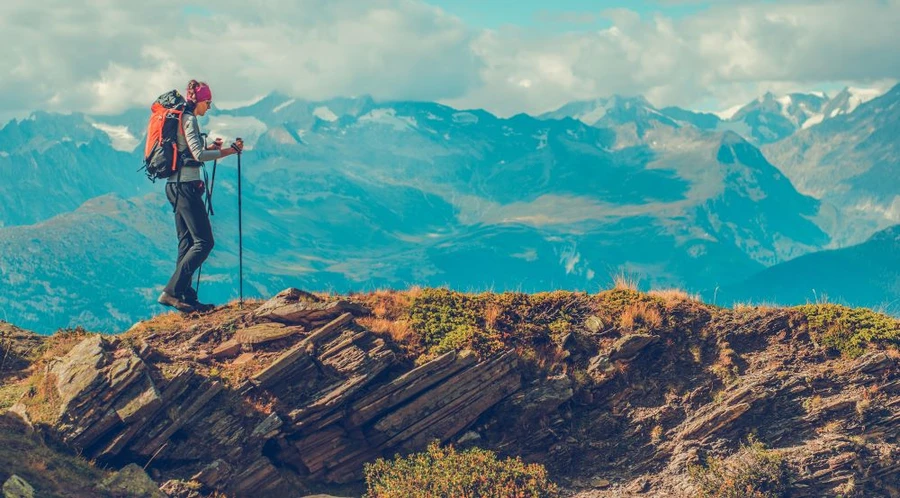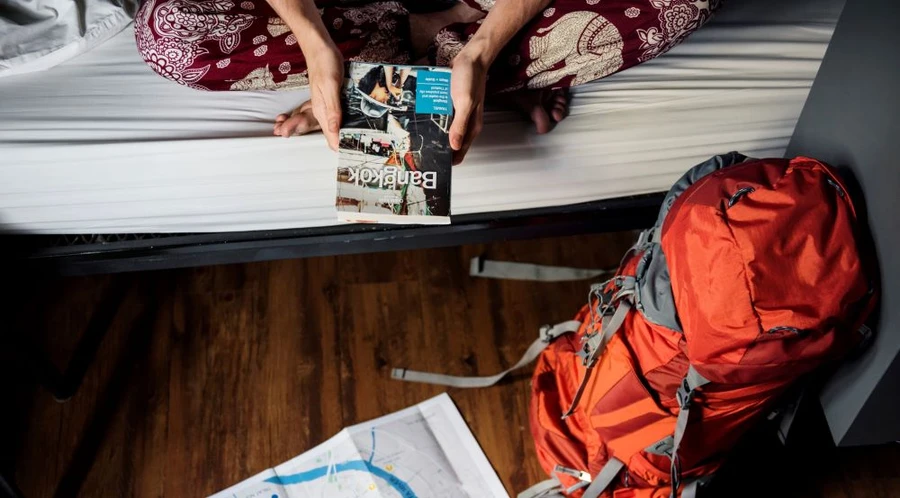Snagging a cheap flight these days isn’t that hard—you can easily find plenty. But cheap tickets come with one downside: you need to pack your bags under 7 kg, which takes some skill. Here are a few tips to help you do it.
The lightest luggage is essential
How to pack for a trip and where to save those crucial grams? The key difference is in your choice of luggage. Bringing a hard-shell suitcase or even a soft suitcase with a frame almost always weighs more than a lightweight backpack. Sure, you can’t pack everything perfectly without wrinkling clothes or losing organization, but on the other hand, you save at least three-quarters of a kilogram. If you’re heading to the mountains or traveling during unstable weather, don’t forget to pack a rain cover for your backpack. And last but not least, remember the allowed dimensions for carry-on luggage.
Hygiene items you can buy once you arrive
Pack only what you need for the first night and morning, and buy everything else once you arrive. In your backpack, bring just a toothbrush and toothpaste, a comb, a mini deodorant, and shower gel. Keep hand sanitizer in your pocket. You can buy everything else locally—even in third-world countries, drugstores are on almost every corner. This also solves the problem of airline rules limiting liquids to 100 ml per container. Instead of a terry towel, pack a quick-drying microfiber towel. It weighs almost nothing and dries in no time. Store all hygiene items in a transparent bag no larger than one liter.
Don’t forget your medication
Getting to a doctor while traveling can be a bit tricky and may not be immediate. So packing at least a basic first aid kit is essential. Include Paralen (pain reliever), throat lozenges, smecta (for stomach issues), activated charcoal, and Endiaron (for diarrhea). Also pack a small bottle of disinfectant, band-aids, and a stretch bandage. Put your medications in a transparent bag—they may want to check it at the airport. If you're heading to exotic locations, bring mosquito repellent from vaccination centers. It’s more expensive than regular ones but much more effective.

Shoes you (don’t) need
It depends on the nature of your trip, but usually one pair of shoes won’t be enough. Some people get by with trekking sandals for the whole trip, but that can limit your activities, and that would be a shame. After all, you can’t trek through the jungle in sandals, climbing a famous mountain won’t be safe either, and some areas—due to scorpions and other critters—are best explored in ankle boots. So wear your closed shoes and pack the open ones in your backpack.
Clothes that weigh almost nothing and keep you warm
Your destination and planned activities matter here. Generally, you’ll need 7 pairs of socks, 7 sets of underwear, 5 t-shirts, two pairs of shorts, and one pair of long pants. Add a lightweight warm fleece and a softshell jacket. Though it sounds crazy, a must-have is an ultralight down jacket — a thin jacket you can pack into a tiny bundle that weighs almost nothing. It’s invaluable on the road, especially at night. Buses and trains in the third world are like mobile refrigerators, and locals often travel with hats and gloves. Shawls and warm blankets also come in handy.
In third-world countries, it’s worth visiting a laundry service at least once every two weeks, where they’ll wash your clothes for just a few coins. In more modern destinations, self-service laundromats with dryers are available. The days of packing two weeks’ worth of clothes plus extras are long gone.
Travelogues, books, and more
An ultralight traveler no longer carries a book or a hefty Lonely Planet guide on flights. Instead, they easily replace them with an e-reader or a smaller tablet. Don’t forget a quality power bank—an empty phone with your accommodation contacts or maps won’t get you far. A headlamp is also handy, whether you’re heading into nature or the city. Returning to your hostel at night, you won’t want to turn on a big light in the room. A waterproof pouch for documents and money, ideally worn around your neck, is useful too—you’ll never lose it and can keep it hidden under your clothes.

What might come in handy?
If you’re planning to travel a bit blindly, definitely try to fit a lightweight hammock into your backpack. From personal experience, I can confirm that as long as you find two trees or anything to hang it from, you can relax almost anywhere. You can even sleep comfortably in it under the open sky or take a few hours’ rest while trekking in nature.
If you plan to spend several nights in a hammock or are fine with really cheap hostels while traveling, it’s worth bringing your own sleeping bag. Packing a sleeping bag can be a bit tricky, but for warm regions, a silk sleeping bag weighing only 160 g is ideal. Warmer sleeping bags weighing up to 450 g are also available.
And finally, don’t forget to pack good vibes and a positive attitude—not only do they weigh nothing, but they’re perfect for every trip!






